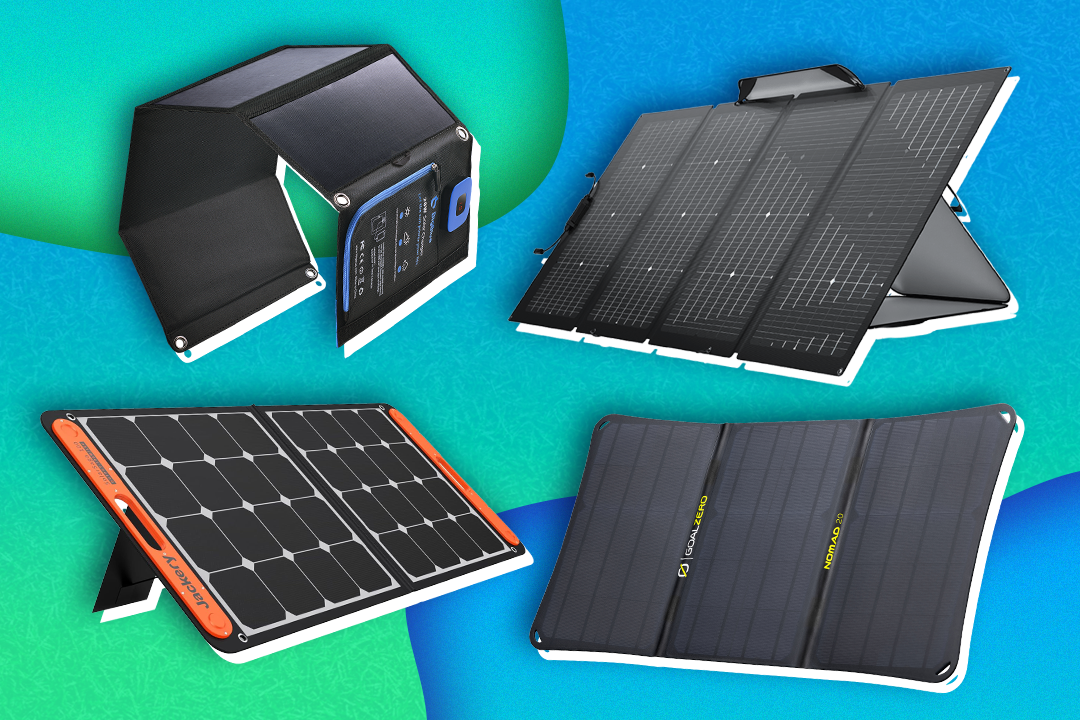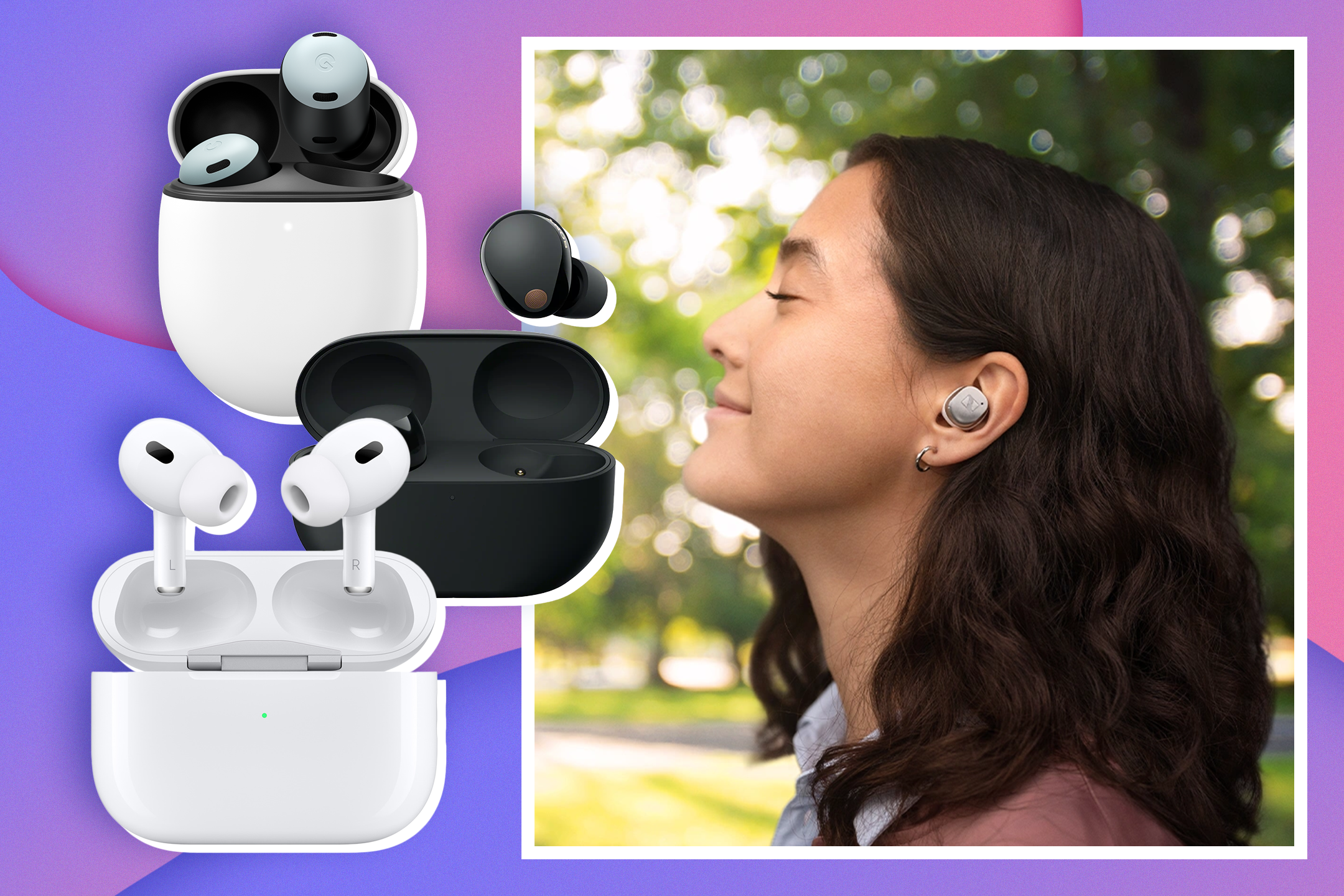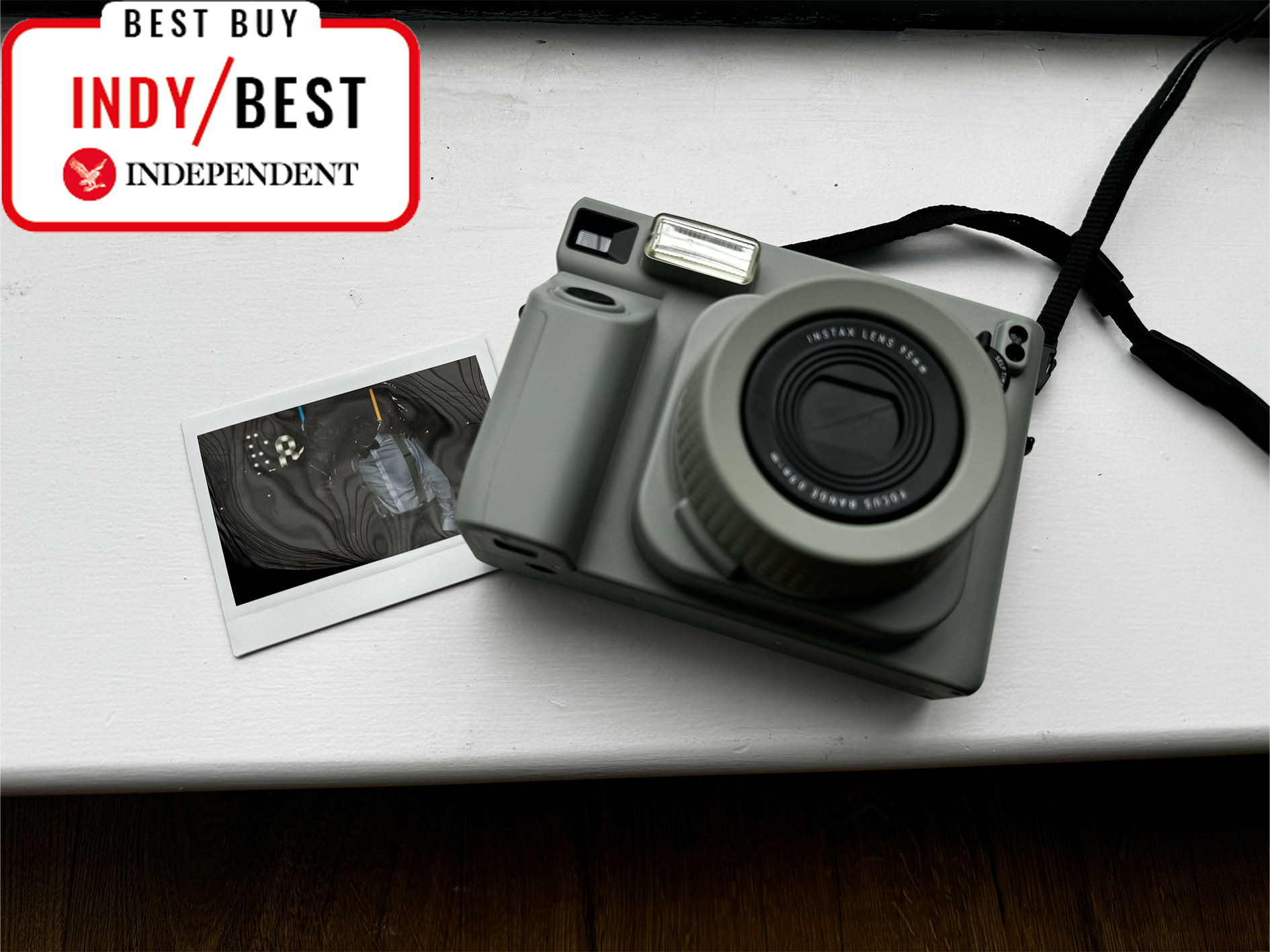
The Independent's journalism is supported by our readers. When you purchase through links on our site, we may earn commission. Why trust us?
8 best instant cameras for nostalgic snapping on the go
Instant photography is back in vogue, with retro-looking cameras popping up at gigs, weddings and more
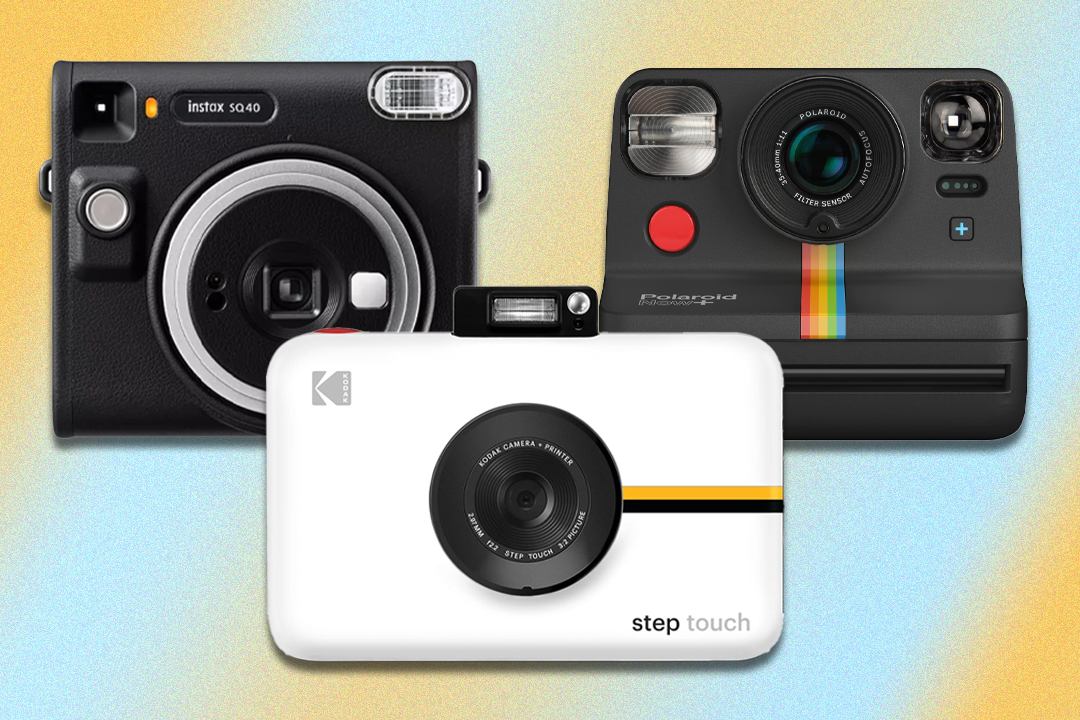
- 1
 2
2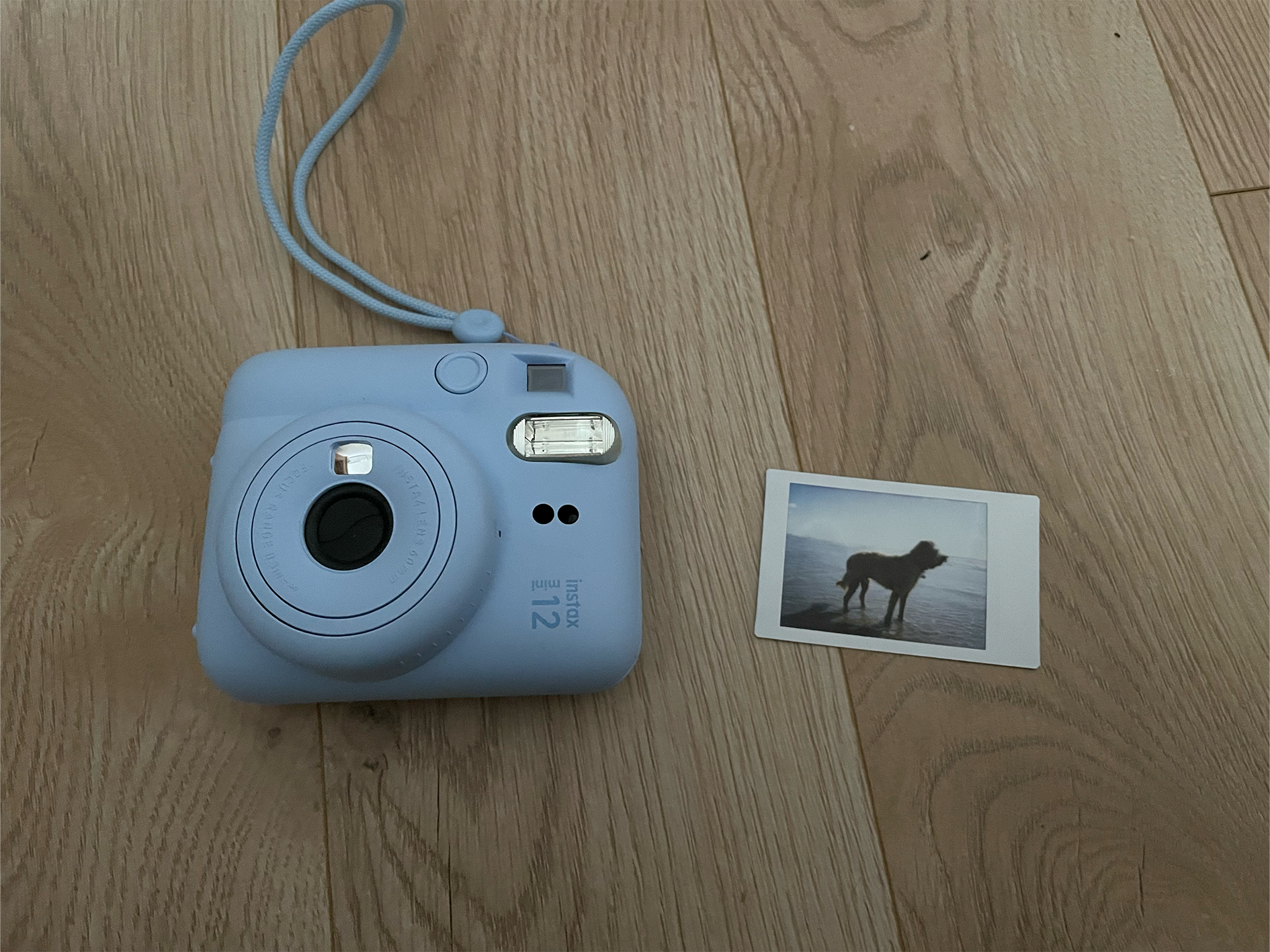
- 3
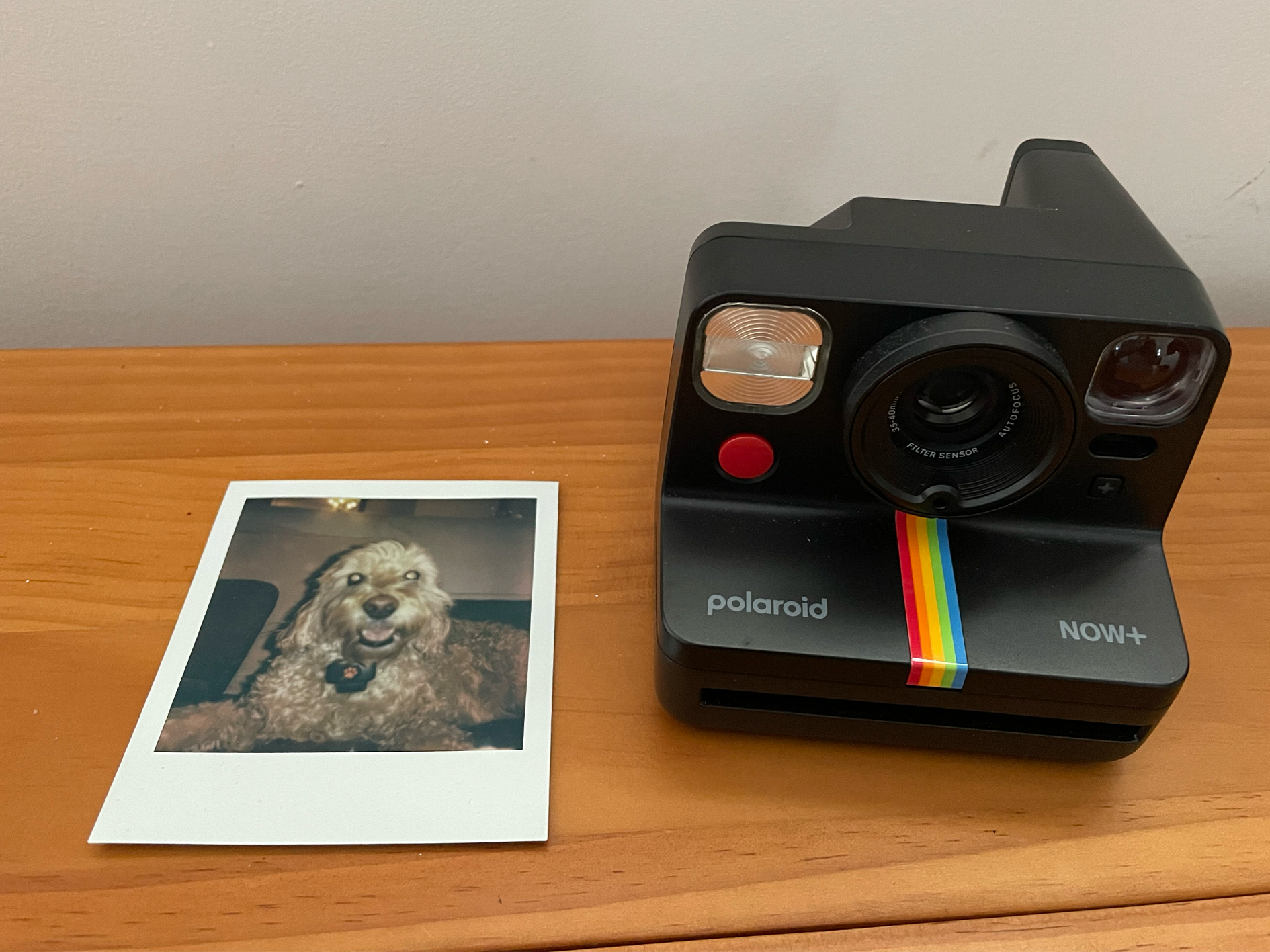 4
4
- 5
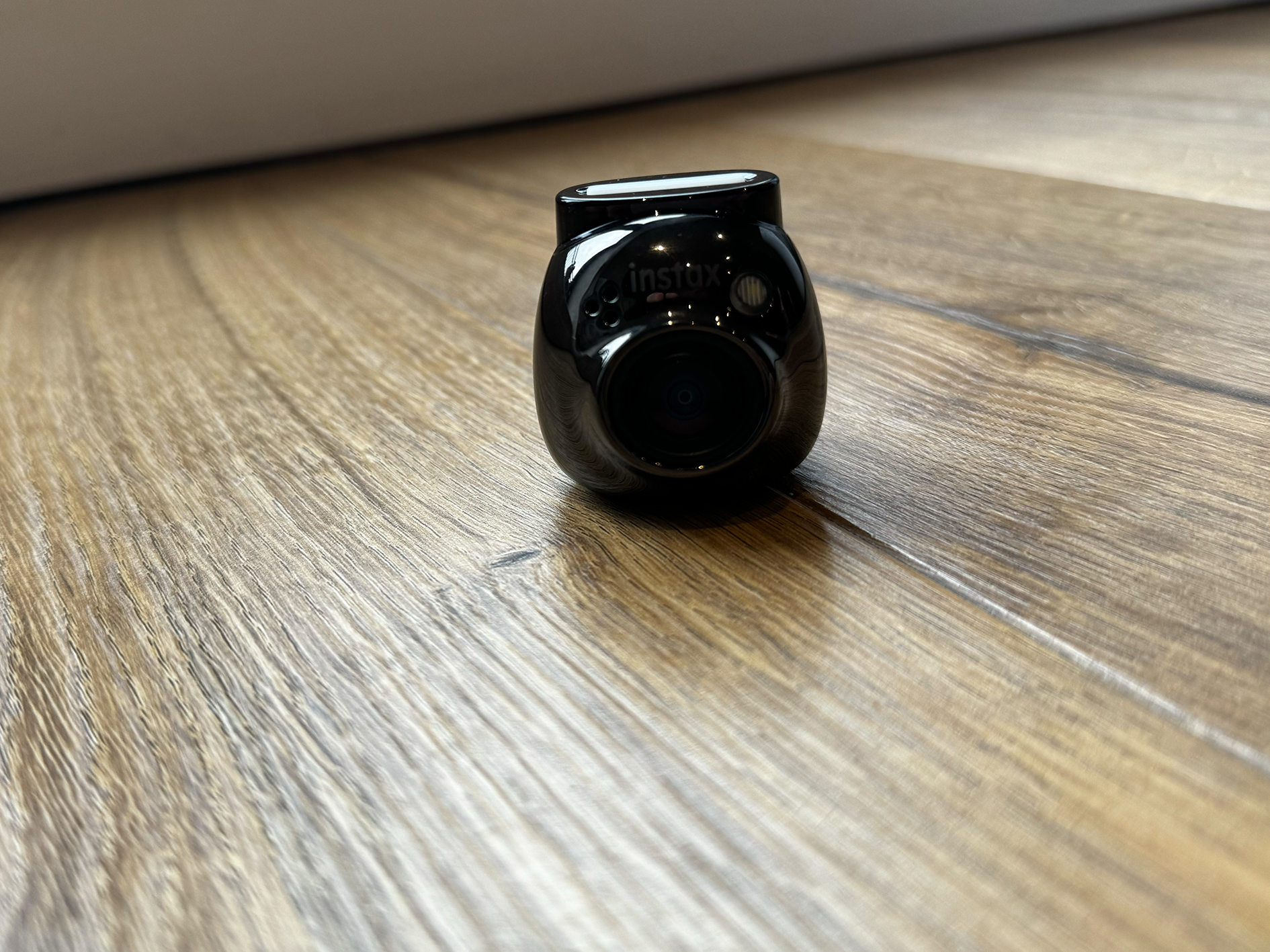 6
6
- 7
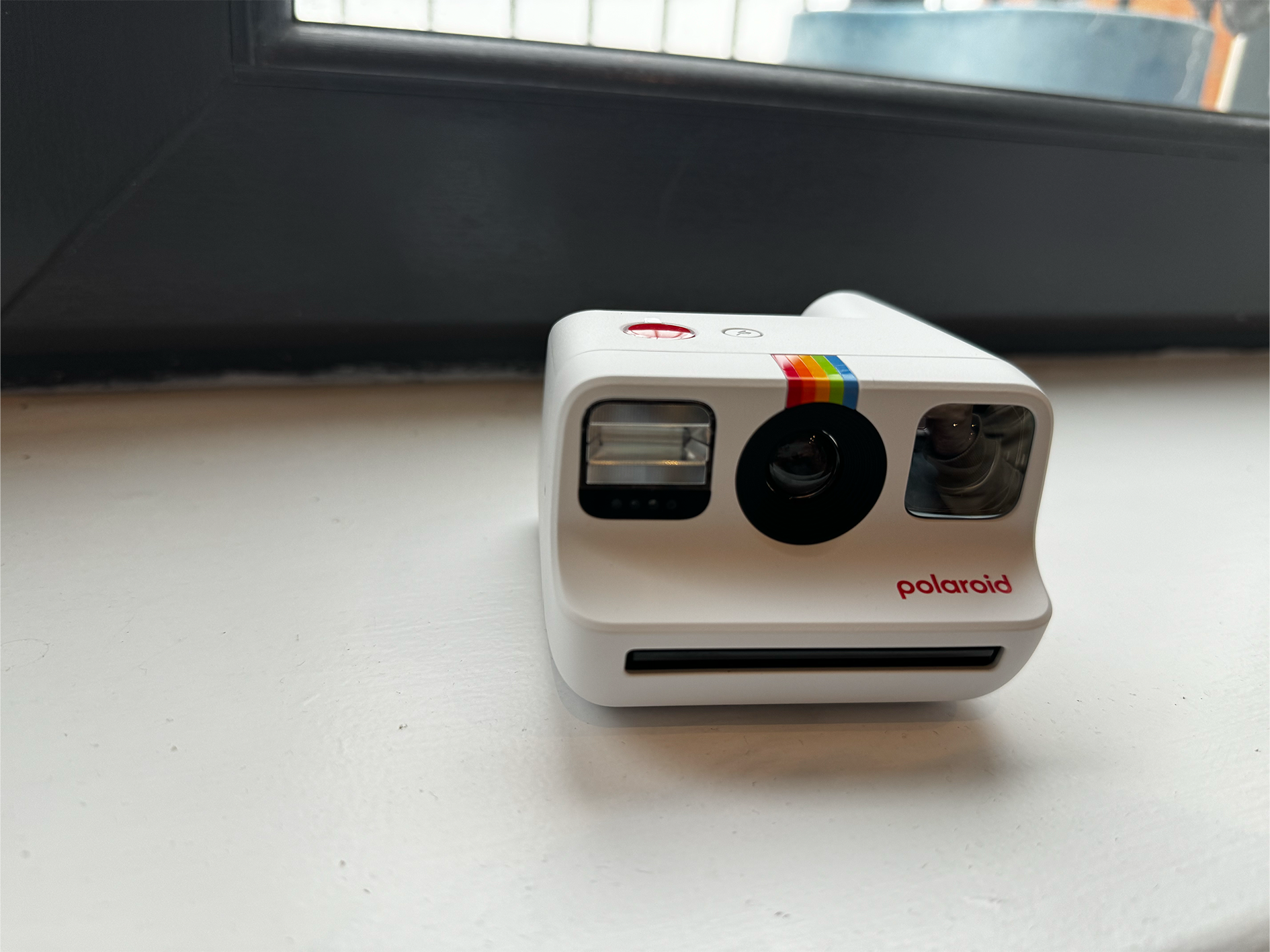 8
8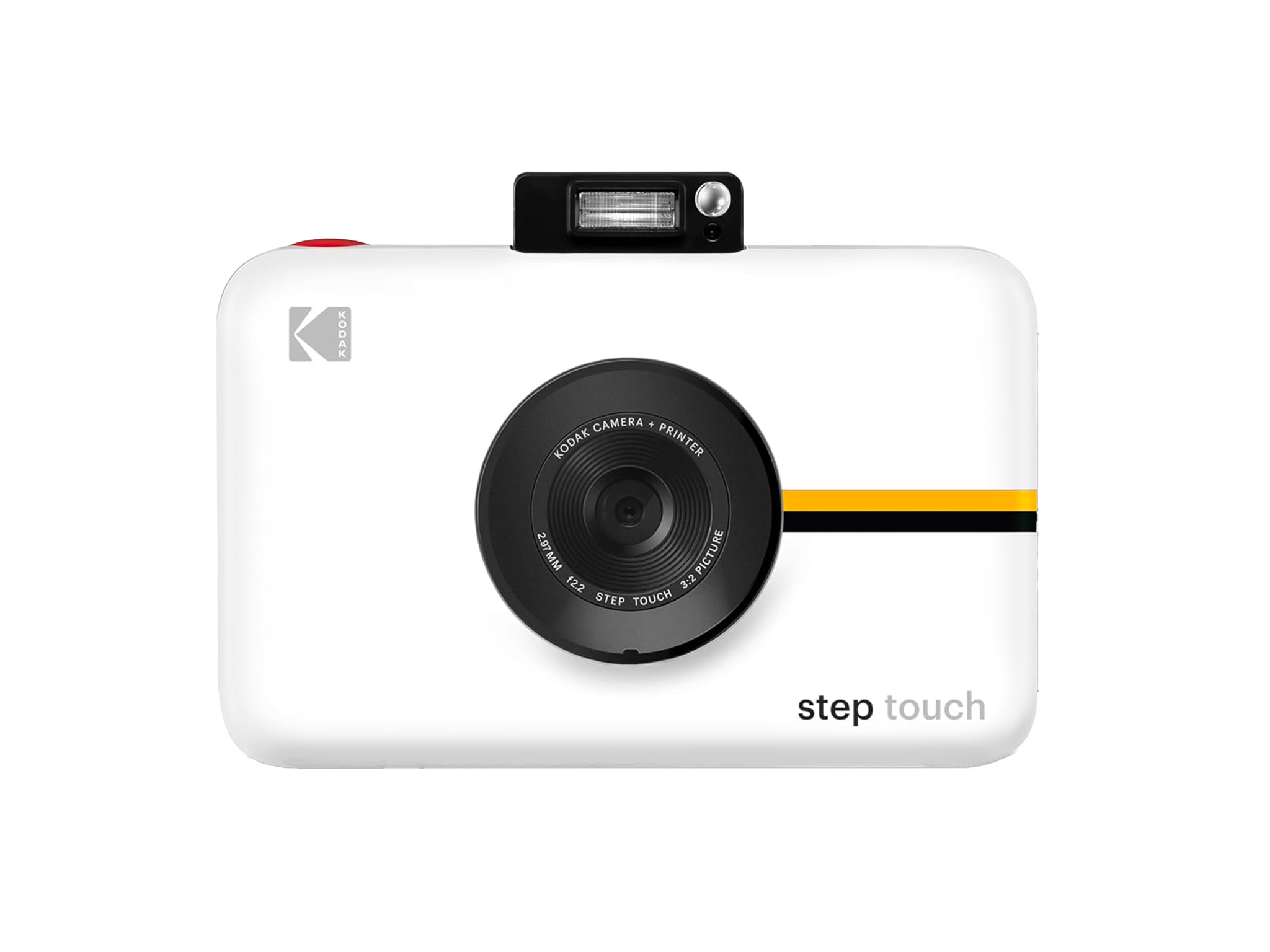
In a world where the phone in your pocket is capable of taking high-resolution photos with vivid colours, realistic shallow depths of field and impressive high dynamic range, even from 100m away, it’s amazing to see instant cameras, with their dark, grainy prints seeing a revival.
Gen Z is leading the analogue resurgence, with Polaroid, Fujifilm and Kodak seeing sales of instant cameras balloon. After falling out of favour at the turn of the millennium, it’s now a common sight to see retro-looking instant cameras at gigs, house parties and at every single summer wedding.
Reimagined for the 20th century, modern instant cameras let you print pictures and save a digital copy. They’re also smaller than ever, more colour accurate, sharper, more vibrant, and feature built-in filters, selfie modes, different artistic styles and wifi connectivity. It’s instant photography for the Instagram age.
Manufacturers are churning out new models at breakneck speed but which instant cameras are the best? We’ve been putting them through their paces, to find out. Just remember, you’ll need to buy film to go in your camera – these aren’t like the disposables you used to take to school.
How we tested
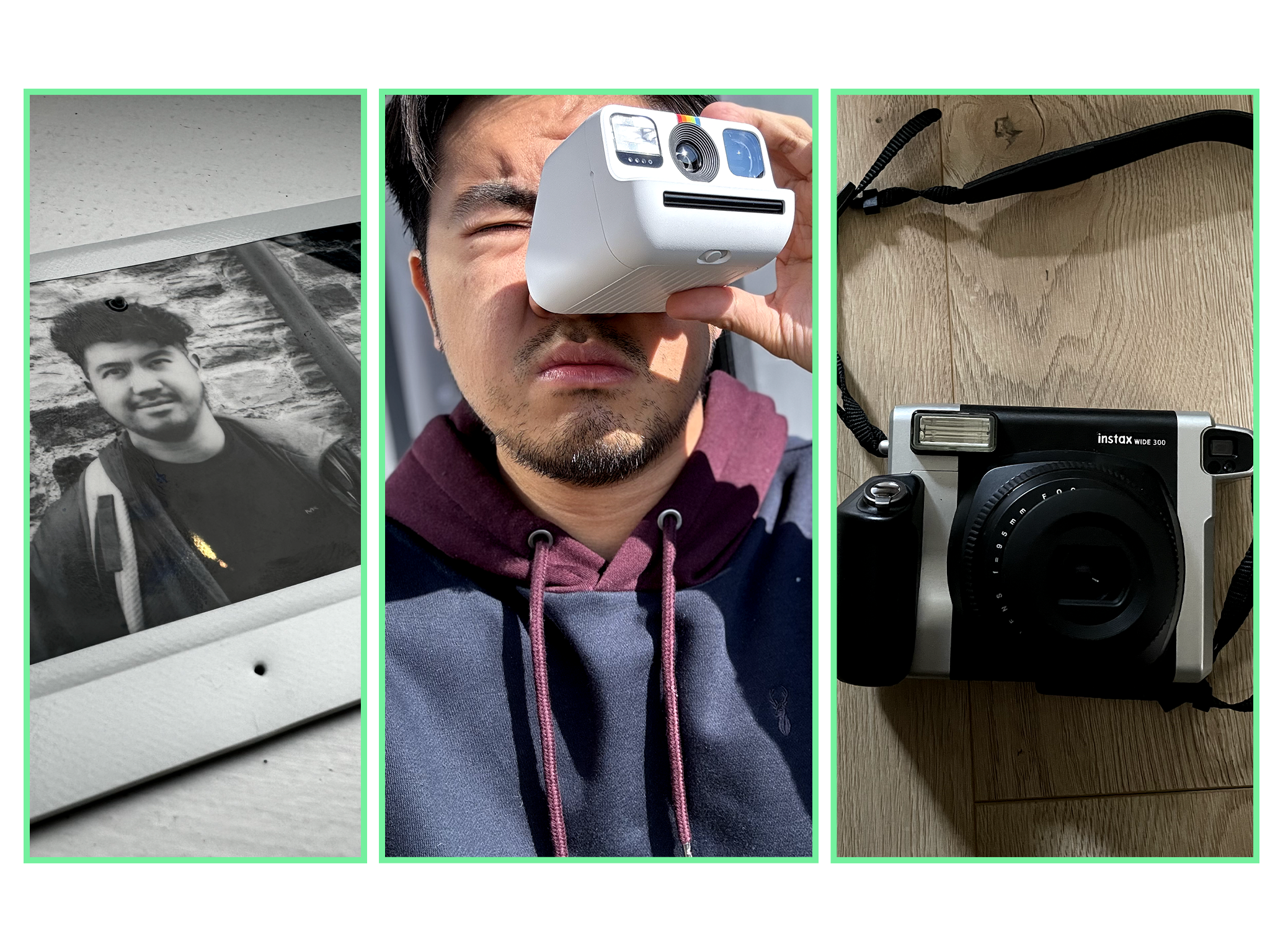
We’ve been testing the best instant cameras over several months – they’ve come with us to baby showers, birthday parties, weddings and on holiday. We used all the cameras in various lighting conditions – from bright daylight and cloudy days to dim pubs and dark nights. We tinkered with the apps and printed more than 100 different images, to help us figure out a list of the best instant snappers. We looked at how portable they were; whether they were difficult to use or set up; and whether they printed well or poorly. We also considered the affordability of the cameras and the film they require.
The best instant cameras for 2024 are:
- Best overall – Fujifilm Instax wide 400: £128, Amazon.co.uk
- Best budget buy – Fujifilm Instax mini 12: £71.74, Amazon.co.uk
- Best smart model – Polaroid now+: £109.95, Amazon.co.uk
- Best film-free model – Kodak step touch: £99, Amazon.co.uk
1Fujifilm Instax wide 400

- Best: Overall
- Batteries: 4 x AA
- Focal length: 95mm
- Flash: Built-in
- Image size: 62mm x 99mm
- Self-timer: Yes
- Why we love it
- Beautiful wide prints
- Easy to use
- Brings onboard a self-timer
- Take note
- Bulky to carry around
- No app support
It’s been almost a decade since Fujifilm last released a wide-film instant camera, but the wait is finally over. Earlier this year, the brand launched the Instax wide 400 – a follow-up to the spectacular 300. While it’s not a big jump over the former, it adds a self-timer and a close-focus lens, and is still a great little snapper.
While it’s significantly bigger and bulkier than Instax’s other analogue offerings, the wide landscape prints you get are simply divine. They’re double the size of Instax mini prints, and the new lens can focus closer than the previous 300, making it feel like a proper camera from the 1970s. Great for group shots, landscape shots and portrait photography, we had loads of fun using this camera.
Images taken in daylight were nice and bright, with that retro sheen in the print and the twist lens helping us focus appropriately. There’s a bright flash, too – though, we tended to keep this off, because it did seem to overexpose faces in both low and mixed lighting. It seemed to perform best in overcast lighting, so keep that in mind.
There aren’t many features – it’s a simple, no-frills click-and-shoot instant camera that produces really good shots. This is the best in Instax’s range, simply because of the wide pictures.
Where to buy film:
Instax wide film: £16.99, Amazon.co.uk
2Fujifilm Instax mini 12

- Best: Budget buy
- Batteries: 2 x AA
- Focal length: 60mm
- Flash: Built-in
- Image size: 54mm x 86mm
- Self-timer: Yes
- Why we love it
- Great to take to parties
- Comes in loads of fun colours
- Take note
- Hard to get the focal point just right
- Prints can be a bit overexposed
Our favourite entry-level snapper is the Fujifilm Instax Mini 12. You don’t need to fuss about with a bunch of buttons or settings, you just point and shoot, and your photo instantly prints out from the top, developing within five minutes. It’s a fun little camera, perfect for teens and families to take on holidays as well as to gigs and parties. The prints are a little small (not much larger than a passport photo), but they’ll still make good memories. There’s even a selfie mode and a selfie mirror to help ensure you’re in the shot.
There were a few issues we had with the mini 12, though. It has a fixed focus, and the viewfinder isn’t where the lens is, so, it takes a little bit of experimenting to get your pictures just right. You might find yourself taking photos that are off-centre, and if your subject isn’t in the focus field, they’ll be blurry. Secondly, the mini 12 has an always-on flash, meaning your photos can turn out overexposed (more so than the wide 400). Over time, we’ve learnt to cover the flash either partially or fully, to get the best results.
Where to buy film:
Instax mini film: £14.99, Amazon.co.uk
3Polaroid Now+

- Best: Smart model
- Batteries: Rechargeable via USB
- Focal length: 102.35mm
- Flash: Built-in
- Image size: 80mm x 100mm
- Self-timer: Yes
- Why we love it
- Comes with five really cool filter lenses
- Love the double exposure feature
- Great app control settings
- Take note
- Overexposes in bright light
Polaroid might have lost a bit of its sparkle since Instax zoomed onto the scene but no one can deny the charm of a classic Polaroid print. With the Polaroid now+, we’ve never had a more fun, customisable experience when snapping instant pictures. Unlike analogue instant cameras, the now+ is a hybrid digital camera that connects to the Polaroid app.
As well as being an all-round great instant camera, the app let us adjust the aperture settings, turn on a light painting feature and double exposure photos – an absolute game changer. While we found that, like most instant cameras, it tends to overexpose in bright light, it was still really fun to use. The camera also comes with five lens filters to help create the perfect vintage effect. We were particularly fond of the red vignette filter. Polaroid film, however, is expensive, so keep that in mind.
Where to buy film:
Polaroid i-type film: £27.99, Amazon.co.uk
4Instax Square SQ 40

- Best: Compact model
- Batteries: 2 x CR2 batteries
- Focal length: 65.75mm
- Flash: Built-in
- Image size: 62mm x 62mm
- Self-timer: Yes
- Why we love it
- Gorgeous design
- Prints really good square photos
- Take note
- Hit and miss exposure
This is the best-looking instant camera Fujifilm makes, with a great retro leather exterior and grippier design that takes us back to 1980s cinema. It even includes a handy neck strap, making it easy to carry around. It’s the instant camera that straddles the line between the compact mini 12 and the bulkier wide 400, printing slightly larger (square-shaped) prints than the mini 12.
Easy to use and set up out of the box, Instax’s square film looks great, and the SQ40 is simple to operate, with well-positioned controls and an automatic sensor that we found did well in measuring the light and its exposure settings, though, watch out for bright light and dim light (you’ll still get heavily overexposed shots). There are two focus ranges, so it’s not super customisable but it was really fun to use.
Where to buy film:
Instax square film: £8.99, Amazon.co.uk
5Instax Pal

- Best: For portability
- Batteries: Rechargeable via USB-C
- Focal length: 6.25mm (35mm film equivalent)
- Flash: Built-in
- Image size: Depends on the printer
- Self-timer: Yes
- Why we love it
- Fits in your pocket
- Connects to an app for easy printing and editing
- Take note
- Requires the purchase of a separate printer
- Other instant cameras produce better images
This is the tiniest camera we’ve ever used. It’s the size of a Tamagotchi, fitting inside our clenched fist. It’s not a typical instant camera in the traditional sense. Rather, it’s a tiny digital shooter that lets you place the camera in different spots, view the lens through the smartphone app, then edit it as you like. Because it’s so small, it doesn’t print its own pictures. You have to connect it (via Bluetooth) to the mini link 2 printer (£104.99, Amazon.co.uk), which prints Instax mini film pictures of everything you’ve taken.
It’s a weird little camera – more of a novelty than anything. Photos can be taken in intervals or with a timer, and you can choose from rich or natural quality modes. The Pal features 18 different effects you can add in the app, including monochromatic and sepia, before printing. The pictures came out well, though, they suffer from the same overexposure issues on other Instax cameras, but we did like how portable the camera was, and that it could store our photos both internally and on the app. We just wish it was a little cheaper – buying the camera, printer and film can get pricey.
Where to buy film:
Instax mini film: £14.99, Amazon.co.uk
6Polaroid Now, Gen 2

- Best: Polaroid
- Batteries: Rechargeable via USB
- Focal length: 102.35mm
- Flash: Built-in
- Image size: 80mm x 100mm
- Self-timer: Yes
- Why we love it
- Loved the auto-focus feature
- Lovely vintage design
- Classic Polaroid prints
- Take note
- Found the prints a bit washed out, compared with Fujifilm
For that classic Polaroid print and timeless Polaroid design, the Polaroid Now is the best vintage-style instant camera. Yes, it’s awkward to hold, with its angular shape, but it’ll transport you back in time. The flash turns on automatically when you switch on the camera, but you can toggle it off if it’s bright outside.
Like the Instax models, it’s sometimes hard to frame a subject, because the viewfinder doesn’t line up with what the camera captures. After a bit of practice, however, we learned how to position ourselves and our subjects. Overall, it’s easy to use but fairly basic – you just point, half-click to focus and full click to take the picture. Auto-focus works great – it’s a lot more convenient than lining up your subject with the focus hole, meaning the whole picture is in focus, rather than the centre figure.
We found Polaroid’s prints were quite washed out, compared with Instax’s, which can give a nice vintage feel, if you like that kind of thing. Just watch out for over- and underexposing – it takes some experimenting, just like all other instant cameras.
Where to buy film:
Polaroid i-type film: £27.99, Amazon.co.uk
7Polaroid Go, Gen 2

- Best: Rechargeable model
- Batteries: Rechargeable via micro-USB
- Focal length: 34mm
- Flash: Built-in
- Image size: 66.6mm x 53.9mm
- Self-timer: Yes
- Why we love it
- Smaller than the Instax mini 12
- Produces decent images
- Take note
- Struggled in low light conditions
Think of the Polaroid Go as the baby version of the Polaroid Now, or Polaroid’s version of the Instax mini. It’s much easier to hold in your hand, while keeping that classic angular Polaroid design. Easy to use, you just double click the flash button to enable double exposure, while holding the button turns on the timer.
It produced surprisingly good credit-card-sized pictures in good lighting conditions, although, we found it struggled in low light. There’s no auto-focus feature on the Go, but there is a similar aperture adjustment setting that does a decent job with exposure. Again, prints are fairly washed-out and muted, giving a pretty nice vintage effect. You won’t get those big classic Polaroid squares but this is a great alternative to the Instax mini.
Where to buy film:
Polaroid Go instant film: £18.99, Amazon.co.uk
8Kodak Step Touch

- Best: Zero-ink model
- Batteries: Rechargeable via microUSB
- Focal length: 2.97mm
- Flash: Built-in
- Image size: 50mm x 76mm
- Self-timer: Yes
- Why we love it
- Works with an app
- Easy to carry around
- Doesn’t require film
- Take note
- Prints aren’t that nice
If you hate the idea of having to regularly buy more film, you’re going to love the Kodak Step Touch. It’s a two-in-one instant camera and printer that uses zero-ink technology. That means your photos come out fully dry and fully printed – no waiting around for it to develop (although, to be fair, that is part of the fun). You just need to load it with paper. There’s a touch screen display on the rear, which took us through the steps when it came to snapping photos and let us review our pictures before printing them.
You can also connect it to the Kodak Step app, so, you can edit your photos and even record and send videos straight to your phone. While we loved the little pop-up flash and the novelty of the device, the prints aren’t all that. The charm about film is your images will have that specific vintage aesthetic. Zero-ink tech just meant our pictures came out looking like we’d printed photos off our computer onto glossy paper. It’s fun but it won’t give you that retro effect. Worse, it’s not even the cheapest model.
The verdict: Instant cameras
If you’re looking for timeless prints that aren’t so small you’ll need to get your microscope out, we’re absolutely obsessed with the Instax wide 400. It snapped brilliant pictures, was fun to use and super easy to operate. For something a bit cheaper and better for those “pick up and go” occasions, you can’t really go wrong with the Instax mini 12.
Want to shoot high-quality videos for your Instagram? Try our choice of the best vlogging cameras
Voucher Codes






